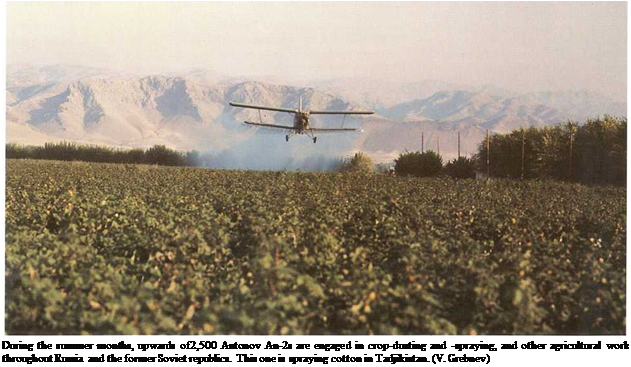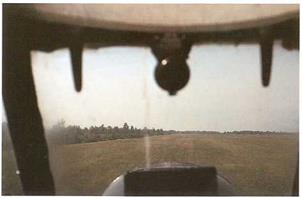King of the Crop Sprayers
![]()


 Productivity
Productivity
During the peak period of chemical spraying, more than
3,0 aircraft are put to use, although the number is declining as ecological concerns have reduced the activity in some areas. Ninety-five percent of the work is performed by the Antonov An-2, for which, in this application, the much – used word ‘workhorse’ is perfectly apt. The remainder, specialized work in small gardens, vineyards, and small fields, is done by helicopters.
The productivity is impressive. In pollination work, for example, the An-2s can cover 400 times as much area as by manual applications; and for crop-spraying, the factors in at least 600- fold.
Doubie Duty
To fly the crop-sprayers, hour after hour, day after day, is demanding on the pilots, who must exercise strict control and discipline, with no margin for error. The An-2s fly at an altitude of three meters (10ft), and each crew makes between 30 and 50 flights per day, each flight lasting between four and 15 minutes.
Seventy percent of Aeroflot captains start flying in agricultural aviation, working their way up from the grass roots — almost literally. Many an Ilyushin 11-86 or 11-62 captain will look back on his agricultural apprenticeship with a certain affection, which is also directed at the veteran biplane, the Annachik, or, as it is sometimes called, by the name that it inherited from the Polikarpov U-2, the Kukuruzhnik.
|
Pilot’s-eye view of a field being dusted with fertilizer, from the cockpit of an Antonov An-2. (R. E.G. Davies) |











